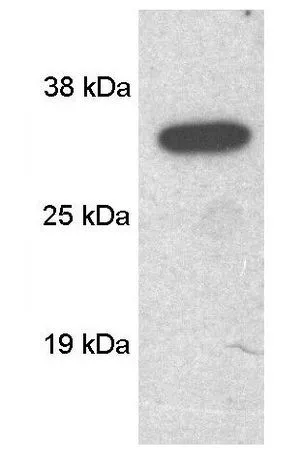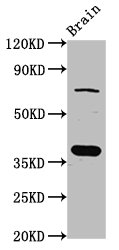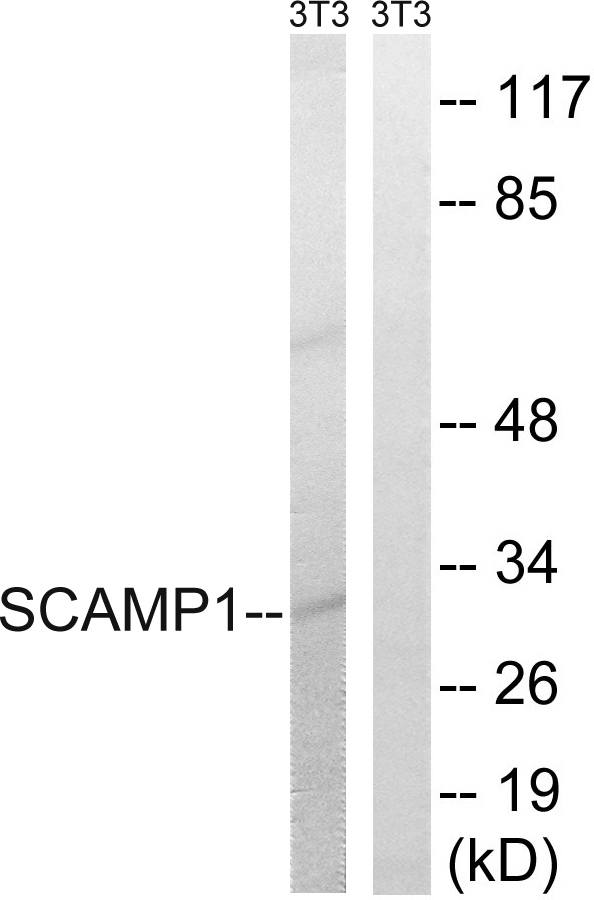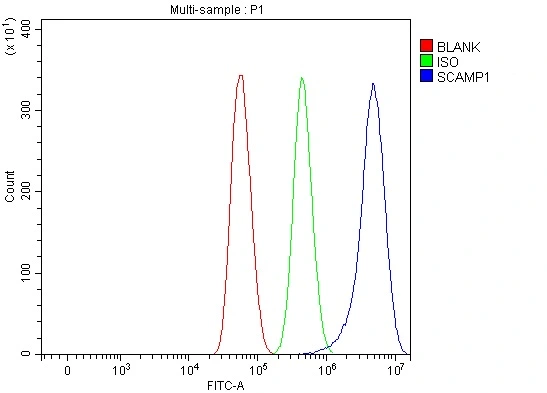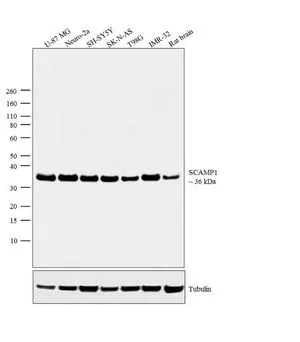
WB analysis of membrane extracts (30 microglysate) of U-87 MG (Lane 1), Neuro-2a (Lane 2), SH-SY5Y (Lane 3), SK-N-AS (Lane 4), T98G (Lane5), IMR-32 (Lane 6), and tissue extract (30 microglysate) of rat brain (Lane 7) using GTX23430 SCAMP 1 antibody. Dilution : 2 microg/ml
SCAMP 1 antibody
GTX23430
ApplicationsImmunoPrecipitation, Western Blot
Product group Antibodies
TargetSCAMP1
Overview
- SupplierGeneTex
- Product NameSCAMP 1 antibody
- Delivery Days Customer9
- Application Supplier NoteWB: 2 microg/ml. *Optimal dilutions/concentrations should be determined by the researcher.Not tested in other applications.
- ApplicationsImmunoPrecipitation, Western Blot
- CertificationResearch Use Only
- ClonalityPolyclonal
- Concentration1 mg/ml
- ConjugateUnconjugated
- Gene ID9522
- Target nameSCAMP1
- Target descriptionsecretory carrier membrane protein 1
- Target synonymsSCAMP, SCAMP37, secretory carrier-associated membrane protein 1
- HostRabbit
- IsotypeIgG
- Protein IDO15126
- Protein NameSecretory carrier-associated membrane protein 1
- Scientific DescriptionThis gene product belongs to the SCAMP family of proteins, which are secretory carrier membrane proteins. They function as carriers to the cell surface in post-golgi recycling pathways. Different family members are highly related products of distinct genes, and are usually expressed together. These findings suggest that these protein family members may function at the same site during vesicular transport rather than in separate pathways. A pseudogene of this gene has been defined on chromosome 1. Alternative splicing results in multiple transcript variants. [provided by RefSeq, Mar 2014]
- Storage Instruction-20°C or -80°C,2°C to 8°C
- UNSPSC12352203

